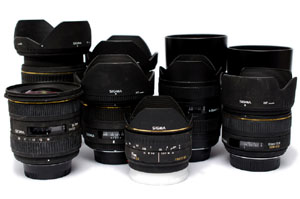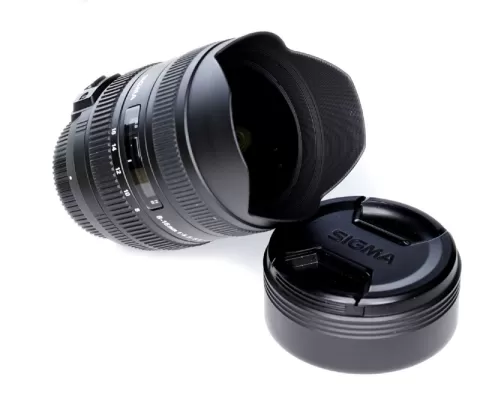I have always been a fan of Sigma lenses, and the Japanese manufacturer's latest initiatives have just made me a bigger fan. Sigma does everything right these days.
I have owned and used Sigma lenses for a long time, and always been very happy with them. Back when I was young I bought them because the camera brand lenses were too expensive for my wallet. Nowadays I buy them because I like them and because they are really good – sometimes the best and better than both Nikon and Canon, and mostly less expensive than brand name lenses. And to add to the attraction Sigma offers some lenses, which aren't available from other manufacturers.
My first ever Sigma lens was a 24-70mm f/2.8, which I bought for my Minolta SLR's. This lens was exactly what I envisioned: a workhorse with great mechanical and optical quality. I wanted a walkaround universal lens in the classical wide-to-short-tele range, but what Minolta offered at f/2.8 was too expensive for me. So I found a Sigma 24-70mm f2.8 EX-D, which suited my economy and worked like a charm om all my Minolta cameras.
Compared to today's lenses it's fairly crude and even primitive and it's not up to today's Sigma standards. But it worked and still does.
I also acquired a Sigma 15mm f/2.8 fisheye for my Minoltas, and that was equally impressing, delivering fine pictures from a really sturdy and well made package. My last Sigma bought for the Minolta bodies was a used 90mm macro, which I also performed very well in spite of being a little outdated
One thing that bothered me was that all the Sigma lenses relied on an in-body focus motor and had autofocus performance on the slow side. Optically they were top notch, but obviously Minolta made the technology for an in-lens focus motor (HSM in Sigma lingo) very hard to implement, and where the Sigma lenses for Nikon and Canon had motors, the Minolta ones didn't.
When I changed to Nikon I bought Nikon glass, but also soon found a Sigma 90mm, identical to the one I already had for the Minolta. Soon after I bought a Sigma 10-20mm, which is still one of my most treasured lenses in spite of it being battered and worn. The 10-20 delivers some astounding images on a DX body.
My Sigma streak continued with a 50mm f/1.4, a 30mm f/1.4 and a 20mm f/1.8, all giving me really good optical and mechanical quality at a fraction of the Nikon prices, and in the case of the 30 and 20mm lenses also both focal lengths and brightness not available elsewhere.
Recently I bought a used Sigma 8-16mm, which is another ace in the hole lens from Sigma, giving me an exquisite mechanical quality and a very wide field-of-view without any fisheye effect.
I had some problems with the 8-16 when I received it from the buyer, and Sigma fixed it for free. I had the same positive experiences with Sigma when I needed the 24-70 and the 15mm rechipped to work on the newer Minolta cameras. Sigma updated the electronics in the lenses for a very low fee. I have had no reason to worry about the service from Sigma.
I recently read this very good article from Imaging Resource on a visit to the Sigma factory in Aizu, Japan, and this beautiful video also shows some of Sigma's manufacturing processes:
Now I have my eyes set on the stellar 18-35mm f/1.8 that came from Sigma recently, and which has brought accolade and raving reviews from all sides. It's not even that expensive, and compared to my Nikon 17-55mm it's way less expensive and most likely quite a bit better.
The 120-300mm f/2.8 telephoto zoom also seems to be an object of desire, but has a pretty steep price tag – as do most bright telephoto lenses – even though it's still a lot less expensive than Nikon's 300mm f/2.8 or the 100-400mm f/4. Some day, maybe.
I picked up the 18-35mm as soon as my local dealer had it in store. The clerk who helped me didn't even know it was in stock, and one of his colleagues had to tell him. No matter what I managed to get my lens, and at 5,500 Danish kroners it's definitely a lot of lens for the money. This equals 1,000 USD, and is not a bad price here even compared to the US price of 800 dollars. Things are generally much more expensive here.




